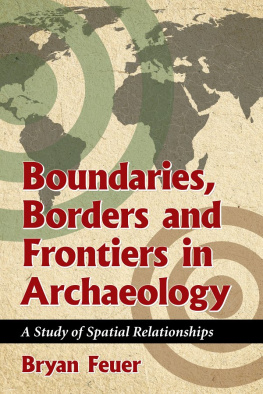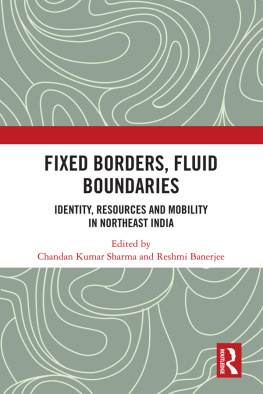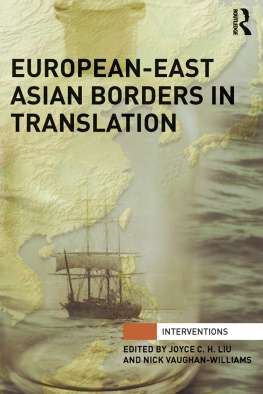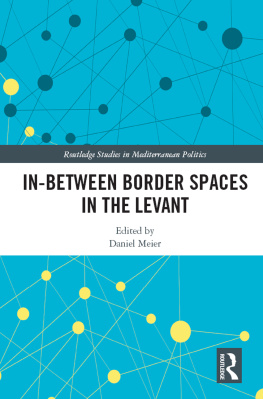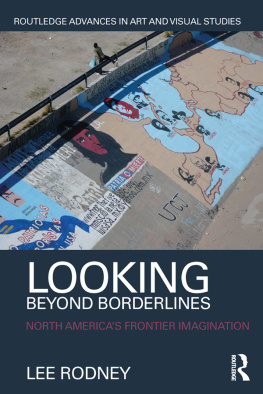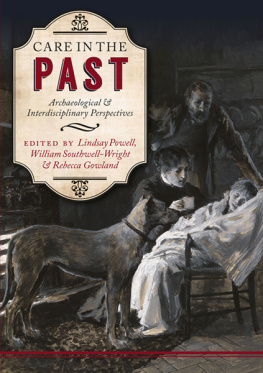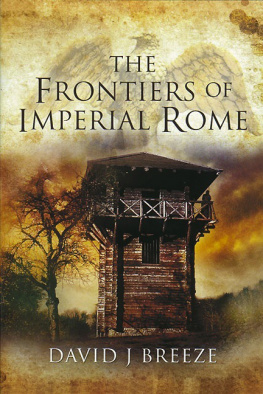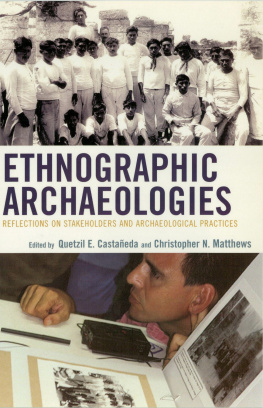Also by BRYAN FEUER
Mycenaean Civilization: An Annotated Bibliography through 2002, rev. ed. (McFarland, 2004)
Boundaries, Borders and Frontiers in Archaeology
A Study of Spatial Relationships
Bryan Feuer

McFarland & Company, Inc., Publishers
Jefferson, North Carolina
Illustrations and maps by Tina Ross Archaeological Illustrations, www.tinaross.ca.
LIBRARY OF CONGRESS CATALOGUING DATA ARE AVAILABLE
BRITISH LIBRARY CATALOGUING DATA ARE AVAILABLE
e-ISBN: 978-1-4766-2424-2
2016 Bryan Feuer. All rights reserved
No part of this book may be reproduced or transmitted in any form or by any means, electronic or mechanical, including photocopying or recording, or by any information storage and retrieval system, without permission in writing from the publisher.
Front cover image 2016 iStock
McFarland & Company, Inc., Publishers
Box 611, Jefferson, North Carolina 28640
www.mcfarlandpub.com
For Lois,
as always
Preface
This book represents more than thirty years of research concerning boundaries, borders and frontiers, beginning with The Northern Mycenaean Border in Thessaly in 1983, which drew upon my dissertation research in that area. Although the focus of my interest has always been the pastand more specifically the Aegean Bronze AgeI draw here upon a wealth of scholarly literature concerning these phenomena within a range of temporal contexts, from contemporary and ethnographic accounts, historical data and archaeological evidence.
In addition to thoroughly exploring the concepts of boundary, border and frontier, I discuss various theoretical and methodological issues concerning peripheriesmost notably center/periphery modelsas they apply to the archaeological record. After an extensive description and discussion of political, economic, social and cultural processes in border and frontier zones, I conclude with case studies of three societies which exemplify the theories, structures and processes discussed: China, Rome and Mycenaean Greece.
Until fairly recently, archaeological research has been directed primarily toward the cores or centers of societies rather than their peripheries. However, much recent work has begun to redress this disparity of focus. Moreover, borders and frontiers also constitute an extremely interesting and productive subject of research, as I shall demonstrate. Precisely because of their peripheral location, frontiers and borders serve as a locus of interaction between people of varying polities, cultures and ethnicities, resulting, inter alia, in a wide range of potential outcomes.
Introduction
Virtually every part of human existence and behavior has a spatial dimension. Humans, like all terrestrial life, require space and resources to exist and to perform activities which, at the minimum, are necessary for survival. Our lives and activities are therefore enacted within a spatial realm which influences them to a considerable degree and, moreover, we envision and structure space in various ways. Space is simultaneously shared and divided; one concept widely employed in respect to attitudes toward space is that of territoriality, the willingness to defend or protect a specified area (Soja 1971:1920; Mellor 1989:53; Smith 1990:1; Bonzani 1992:210211).
Implicit in this concept is the idea that space is partitioned so that of the amount of territory potentially available to a group, a portion is restricted to a home or core area that offers security and some degree of separation from others. Thus is created a conflict or dialectic between the need for security and control on the one hand and the opportunity for broader access to space, people and resources beyond the home territory on the other (Gottmann 1973). Territoriality is expressed in most non-human species as well (Soja 1971:3239). However, not all human groups choose to exercise it to the same extent.
Territoriality is, therefore, not some innate human trait but a social construct. It can take different forms in different geographical circumstances, and its specific manifestations must be contextualized. Territoriality and its various expressions must be recognized as means to some end, such as material survival, political control or xenophobia [Smith 1990:3].
In addition to the practical and functional aspects of territoriality, territory includes emotional and symbolic dimensions involving the sense of place and of identity (Smith 1990:2). Territoriality is, as will be shown, closely related to the idea of boundaries.
The study of borders, frontiers and boundaries necessarily entails investigating variation through space. Such variation can be approached by means of various perspectives, derived primarily from the disciplines of geography, history and anthropology (e.g., Sopher 1972; Renfrew 1978; Burnham and Kingsbury 1979:5; Cherry 1987:153). By combining these approaches, I intend here to bring together research and ideas about spatial organization in order to present a theoretical overview of a significant aspect of human cognition and behavior. Although I will draw material from a variety of sources and contexts, my focus here will be upon the expression of spatial behavior and organization and the examination of boundaries, borders and frontiers in an archaeological context. Since the archaeological record is generally less complete in most respects compared to ethnographic or historical contexts, this emphasis will necessitate the discussion of certain methodological issues, including the identification and characterization of boundaries and peripheral zones.
Basic Concepts
Beginning with basic spatial concepts, I first define and discuss the nature and meaning of boundaries, borders and frontiers. After distinguishing between boundaries, which are linear, and borders and frontiers, which are zonal, I then differentiate borders and frontiers, the former constituting the inner edge of the periphery, the latter the outer edge; the significance of this difference will also be discussed. It will be seen from this discussion that while borders have not received a great deal of scrutiny, there is a well-developed literature concerning frontiers. Finally, I consider the relationship among boundaries, borders and frontiers.
Having defined and characterized frontiers, borders, and boundaries, I then examine a number of the theoretical models which have been developed in order to structure, organize and understand spatial relationships. The dominant model is that of center or core and periphery, most notably the world systems approach proposed by Immanuel Wallerstein (1974).
Archaeological Implications
Studying the phenomena discussed above in the archaeological record raises a number of methodological issues concerning the identification and characterization not only of boundaries, borders and frontiers, but the processes associated with them. This in turn involves drawing inferences from material remains, particularly in respect to their spatial distribution. I therefore consider the nature of archaeological cultures and whether they in fact exist, concluding that such entities can be recognized (Clarke 1978; Renfrew 1978) and have some meaning not only in terms of social, political and economic organization, but more specifically in respect to boundaries, borders and frontiers.
In order to define past societies or archaeological cultures, scholars have made considerable effort to delimit their boundaries. But as Strassoldo notes, people largely agree in their identification of the core of things; to find the boundaries is more difficult (1977:86). The most basic approach has been to use natural boundaries such as rivers and mountains to approximate limits of settlement or control. These natural boundaries have typically been combined with humanly-constructed physical structures of various materialsincluding wood, earth and stonemost commonly in the form of walls. More recently settlement pattern analysis utilizing central place theory and other geographical constructs have also been used to envision the approximate boundaries of state-level societies (Cherry 1987). A final method has been to map the distribution of artifacts and other items of material culture (Trigger 1974; Hodder and Orton 1976; Feuer 1983; Trinkaus 1984). All of these approaches raise methodological issues, but all of the maps of prehistoric societies published in books and journal articles in fact employ some combination thereof. Of course the accuracy of boundaries thus derived is considerably improved if these projected limits can be combined with any written documentation ranging from inscriptions to ancient texts.
Next page
